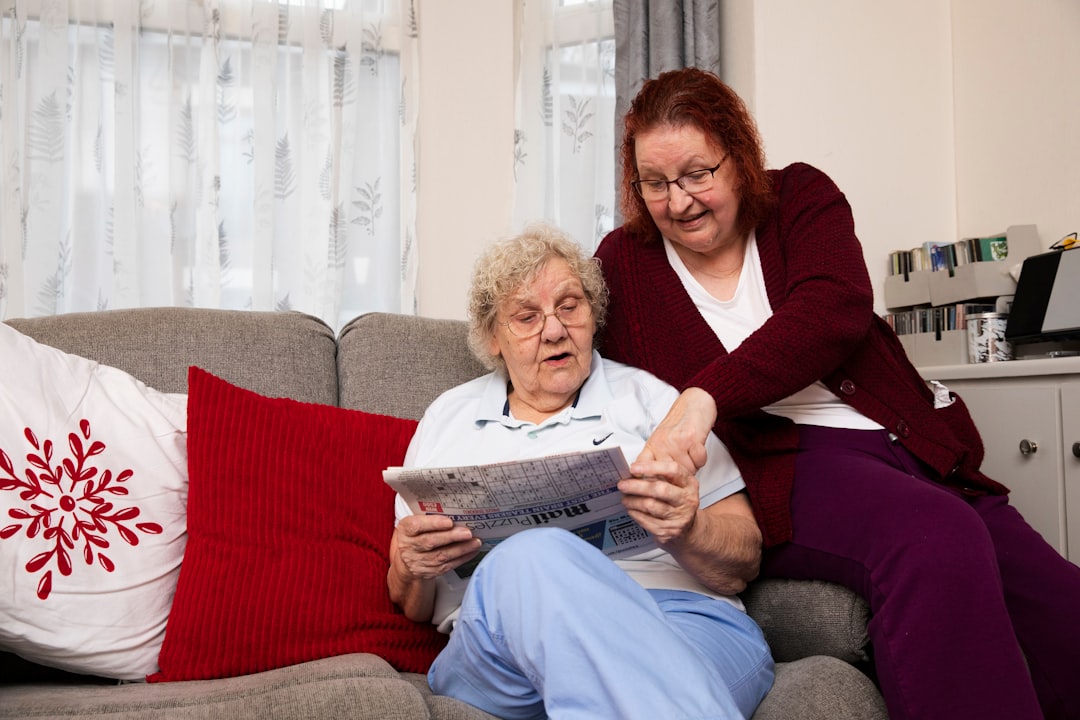

Engage prospects with a scan and streamline customer engagement with FREE QR code marketing tools by Sona – no strings attached!
Create a Free QR CodeFree consultation

No commitment

Engage prospects with a scan and streamline customer engagement with FREE QR code marketing tools by Sona – no strings attached!
Create a Free QR CodeFree consultation

No commitment
Insurance is a cornerstone of financial security and peace of mind for seniors, but serving this demographic poses significant challenges. Senior insurance providers often struggle to gather genuine feedback, accurately identify policyholder needs, and deliver personalized, responsive service to a diverse aging population. Traditional methods such as tear-off feedback cards, clunky web forms, and mailed surveys slow the process and leave many customers unheard and disengaged, leading to missed opportunities for service improvements and upselling.
With seniors and their families now engaging across both physical and digital channels, QR code marketing has emerged as a simple way to reduce friction in collecting real-time insights. For teams facing low response rates and outdated data, QR codes act as a powerful bridge: transforming routine interactions at agency locations, community events, or even in customers' homes into immediate feedback opportunities, all without requiring technical expertise or lengthy phone calls.
By embedding QR codes throughout the insurance journey on policy packets, mailings, and agent business cards, insurers can collect actionable feedback after every interaction. This guide outlines how senior insurance providers can leverage QR codes to drive engagement, surface hidden pain points, and create more responsive, satisfying experiences for seniors and their families.

Many insurance teams still rely on outdated processes such as paper surveys, mailed questionnaires, or sporadic calls that leave high-value prospects and at-risk policyholders untracked and unheard. These methods are slow, expensive, and often inaccessible for caregivers or family members who share responsibility for the senior’s policy. The outcome is predictable: low response rates, stale insights, and limited visibility into satisfaction across different products, agents, and branches.
QR codes bridge this gap by letting customers scan and respond in seconds using their own mobile device. Instead of asking seniors to type long URLs or log into portals, a simple scan launches a clear, mobile-friendly survey or feedback form like a short Google Forms QR. This reduces friction at moments that matter, such as after agent appointments, during claims, or at renewal. Modern tools like Sona QR allow you to create distinct codes for each touchpoint, route scans to the right form or resource, and sync everything into your CRM so your team can act fast.
Unified platforms now let teams easily create and manage QR-driven campaigns, A/B test variations, and automatically sync feedback into systems like Salesforce or HubSpot. The result is faster personalization, fewer missed leads, and higher satisfaction scores tied to specific teams and processes.

Feedback gaps often appear at critical moments: when a senior first receives a policy booklet, right after an agent meeting, during a claim, or when a family member compares Medicare Advantage and Medigap options ahead of enrollment windows. If your feedback collection depends on long phone queues, mailed forms, or generic web portals, you risk missing precise intent signals. Anonymous loyalists remain unrecognized, dissatisfied seniors churn quietly, and promising prospects slip away.
QR codes solve these problems by making it simple to respond in the flow of everyday life. A scan on a renewal notice can trigger a one-minute satisfaction check. A code on a brochure can open an explainer video or a callback request. A QR on an agent business card lets caregivers instantly save contact details or book a follow-up. These small shifts add up to a meaningful increase in engagement and faster service recovery.
For example, a QR on the cover letter of a renewal packet can ask a single question about clarity. If a policyholder selects that they are confused, the code can trigger a thank-you screen with a scheduling link. Your retention team then reaches out within 24 hours with targeted guidance. Small interventions like this improve satisfaction while reducing unnecessary churn.

Legacy feedback channels rarely capture every moment where a senior or family member might share what is working or what is confusing. QR codes give you flexible formats that match different needs across the journey. Selecting the right format matters because it shapes how quickly a customer can complete a task or reach a person.
Web links are the most common, sending scanners to a secure landing page, survey, or resource center. vCards are powerful on business cards and direct mail, letting policyholders save an agent’s contact with one tap. SMS and email QR codes create a pre-filled message to support so a caregiver can report an issue or request a callback without searching for contact information. For teams with a mobile app, an app download QR code can direct to the correct app store automatically, though in senior segments it is often better to point to a simple mobile webpage first.
With dynamic QR technology, you can iterate without reprinting and redirect traffic to different resources as programs evolve. This flexibility reduces waste, protects budgets, and ensures your messages stay aligned with current policy information and enrollment periods.

Blind spots in feedback usually hide where your team touches customers most. Think about every document, interaction, or in-person moment that does not currently generate measurable signals. Those are prime targets for QR activation. When a senior receives a policy document in the mail, attends a wellness seminar, drops by a branch, or reads a newsletter, a scannable prompt can turn passive consumption into actionable engagement.
Strategic placement is essential. The best locations make the QR code obvious, accessible, and useful in the moment. For seniors, consider larger codes, high-contrast frames, and short CTAs that set expectations clearly. Position codes where the reader naturally pauses: the cover of a packet, the end of a brochure section, near signature lines, or on takeaway cards after appointments.
By meeting customers where they already interact with your brand, you collect feedback across the whole audience, not just the most vocal. This broader view helps you prioritize improvements, target outreach more precisely, and build loyalty with meaningful responsiveness.
Senior insurance teams benefit most when QR codes are mapped to the moments that predict satisfaction, churn, or purchase intent. Choose a few core use cases to start, then scale as you learn which placements and offers perform best for your population. Short, accessible experiences typically produce higher response rates and better data quality.
Below are three high-impact use cases aligned with common interactions in senior insurance:
Teams often see a doubling or tripling of feedback volume when replacing mailed surveys with QR-linked mobile forms. More importantly, the data arrives in time to help the customer, rather than after a decision is already made.
Each scan is a reliable signal about intent, context, and readiness. With unique codes aligned to journey stages and use cases, you can turn offline interactions into segmented audiences for precise follow-up across email, SMS, and paid media with intent retargeting. This is especially important in senior insurance where family caregivers, policyholders, and prospects often interact differently.
Start by aligning codes to the funnel. Use awareness QR codes on community posters and seminar signage, consideration codes on brochures and comparison guides, and conversion codes on renewal packets or pricing sheets. Tag every scan with the use case and placement so your CRM can route it properly. With Sona QR, you can sync these tags automatically to Salesforce or HubSpot and trigger workflows or sales alerts.
By building segments from real behaviors rather than guesses, your team can personalize outreach, reduce wasted effort, and focus resources where they move the needle most.
QR codes tie your offline presence to your digital engine so every flyer, packet, or event becomes measurable. This integration brings consistency across channels and ensures that insights do not get trapped in silos. When scan activity flows into a centralized platform, you can compare performance by channel, message, or agent and optimize quickly.
For senior insurance providers, the most effective deployments reflect the materials you already produce. Policy packets, renewal letters, seminar handouts, and branch signage are proven places to capture attention. Add clear CTAs near the code that say exactly what will happen after scanning, such as “Scan to ask a question” or “Scan to rate your visit in 30 seconds.”
A centralized platform like Sona QR lets you manage all codes, monitor performance across channels, and sync scan data with your CRM and ad platforms. This turns offline touchpoints into always-on contributors to your digital strategy.
Small, disciplined steps help you launch quickly while building a foundation for scale. Use the following checklist to plan, execute, and iterate with confidence. Start with one or two high-impact touchpoints such as renewal packets and post-appointment cards, then expand once you validate scan rates and outcomes.
Strong internal alignment is essential. Make sure agents, branch staff, and event teams understand the goal of each QR. Provide scripts and simple explanations so they can help seniors participate without frustration. Track early results weekly and adjust copy, placement, or incentives to lift performance.
Pick a specific process where feedback or action is missing, slow, or hard to measure. For senior insurance, great starting points include post-appointment satisfaction, renewal intent checks, and event interest capture. Define the desired business outcome for each, such as raising renewal retention or increasing qualified consultations.
Decide between static and dynamic QR codes, and match the format to your destination. Most feedback and campaign use cases benefit from dynamic codes because they allow editing without reprinting and provide analytics. Pair the code with the most appropriate destination page, form, or message.
Your design influences whether people notice the code, understand what it does, and trust it enough to scan. Use high-contrast frames, large codes, and readable CTAs. Test scanning on multiple devices, angles, and lighting conditions to ensure real-world reliability.
Roll out to the assets that reach your target audience most often. Start with materials that already ship in large volume such as onboarding kits and renewal letters. Add codes to event signage and agent collateral once your forms and scripts are refined.
Start creating QR codes for free.
Measurement closes the loop. Track scan volume, form completion rate, and downstream actions such as scheduled appointments or saved contacts. Compare results by location, agent, and document type to learn what works best.
Modern management tools like Sona QR keep feedback cycles fast and actionable, linking engagement directly to operational metrics such as retention rate, time to callback, and agent satisfaction.
Traditional approaches often cause valuable insights to become siloed or delayed, leaving teams to guess which materials or moments drive satisfaction or sales. Comprehensive tracking has changed that. With the right setup, you can see who scanned, when and where they scanned, what device they used, and what they did next. These signals help you prioritize outreach, coach teams, and invest in the placements that produce measurable outcomes.
For senior insurance providers, attribution matters because decisions often involve multiple stakeholders and touchpoints: a mailed packet, a seminar, a branch visit, and a phone call. Connecting the dots across these steps makes your campaigns smarter and your service more responsive. That is where tools like Sona QR and Sona excel, unifying offline scans with online behaviors and CRM records.
When every scan rolls up to a clear business result, QR codes become more than an engagement tool. They become part of your performance engine, helping your team make informed decisions that protect revenue and improve customer experience.
Once your first deployments are live, refine your approach using the channels and behaviors unique to senior audiences. Accessibility and clarity are the biggest levers. Keep visual clutter low, text large, and CTAs direct. Pair every QR with a benefit-driven promise so seniors know exactly what to expect. For additional ideas, explore senior care marketing.
Automate follow-up wherever possible. A scan that signals confusion about coverage should trigger a personalized email, a friendly text, or an agent callback. Tight feedback loops build trust and encourage continued participation in your surveys and service flows.
Creative deployments can amplify impact. For example, include a QR on invoices for insurance renewals that opens a one-click “request a call” form, or place a QR on flu clinic flyers that schedules a benefits review for preventive care programs.

Senior insurance organizations of all sizes are using QR codes to modernize offline touchpoints and gather measurable feedback. The common thread is a shift from passive, untracked materials to interactive experiences that generate signals your teams can act on, supported by a practical QR marketing strategy. Below are examples that illustrate what this looks like in practice.
These scenarios highlight how codes convert routine moments into insights. They also show how dynamic management allows teams to pivot without reprinting, which is especially useful during open enrollment when content evolves quickly.
Each example demonstrates how QR-enabled moments deliver actionable insights at the account level. The payoffs include higher retention, better customer experience, and more efficient allocation of staff time.
Success with QR codes in senior insurance depends on thoughtful design, clear messaging, and consistent staff enablement. It is easy to place a code and hope for the best, but the real gains come from testing different CTAs, refining form length, and aligning destinations with the task at hand. For broader tactics, see QR best practices. Equally important is avoiding common mistakes that create friction or undermine trust.
Make your codes hard to miss and easy to use. Place them where seniors naturally pause, tell them the benefit up front, and keep the action short. Support seniors who are unfamiliar with QR technology by offering a brief explanation and a short URL backup.
QR codes are a practical and scalable way for senior insurance providers to transform every customer interaction, whether in person, by mail, or at an event, into a high-impact feedback opportunity. By eliminating visibility gaps, surfacing engagement signals, and delivering reliable insights to every customer account, QR codes empower teams to identify missed opportunities, enhance service, and build deeper loyalty. With the right strategy and technology, feedback becomes a proactive engine for experience improvement, positioning insurers to better serve today's senior policyholders and adapt to evolving expectations.
QR codes have revolutionized the senior insurance providers industry by transforming feedback collection into a seamless, real-time process. By integrating QR codes, providers can not only gather valuable insights from seniors quickly and easily but also enhance communication and trust, leading to improved customer satisfaction and retention. Imagine instantly capturing honest feedback after every interaction and using that data to fine-tune your services for the demographic that matters most.
With Sona QR, you gain access to dynamic, trackable QR codes that can be updated on the fly without the need to reprint materials, ensuring your feedback campaigns remain fresh and relevant. Every scan connects directly to actionable insights, helping you identify areas for improvement and opportunities for growth. Start for free with Sona QR today and turn every scan into a meaningful conversation that drives better experiences and stronger relationships with your senior clients.
The article does not list specific providers but focuses on how senior insurance providers can improve service using QR codes to gather feedback and enhance engagement.
Choosing the right insurance involves understanding their needs, comparing coverage options like Medicare Advantage and Medigap, and ensuring providers offer personalized and accessible service, which can be supported by feedback tools like QR codes.
Senior insurance providers typically offer coverage options such as Medicare Advantage, Medigap, Part D, and supplemental benefits like dental and prescription coverage.
The article does not specify costs but suggests that pricing and coverage details are often communicated through policy documents and renewal packets where QR codes can facilitate quick feedback or questions.
Specialized insurance for seniors provides tailored coverage for common needs like prescriptions and supplemental benefits, along with personalized service that addresses the unique challenges of aging populations.
You can compare providers by reviewing coverage options, customer service responsiveness, and using tools like QR codes on brochures or policy documents to access surveys, explainer videos, and comparison pages.
Common insurance needs for seniors include coverage for Medicare Advantage, Medigap, prescription drugs (Part D), supplemental dental, and long-term care.
Ensure your plan includes long-term care coverage by reviewing policy documents carefully, asking questions through accessible channels like QR code surveys, and discussing options with your agent.
Insurance for seniors offers protections such as coverage for medical costs, prescriptions, supplemental benefits, and potential long-term care, helping manage expenses and reduce financial risk.
Assess sufficiency by regularly reviewing policy documents, providing feedback via QR code surveys after interactions, and consulting with agents to address any confusion or coverage gaps.
Use Sona QR's trackable codes to improve customer acquisition and engagement today.
Create Your FREE Trackable QR Code in SecondsJoin results-focused teams combining Sona Platform automation with advanced Google Ads strategies to scale lead generation

Connect your existing CRM

Free Account Enrichment

No setup fees
No commitment required

Free consultation

Get a custom Google Ads roadmap for your business






Launch campaigns that generate qualified leads in 30 days or less.
